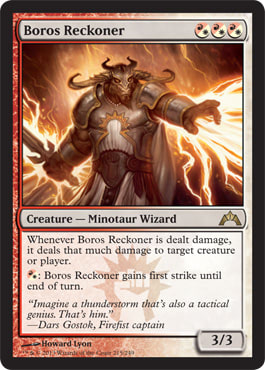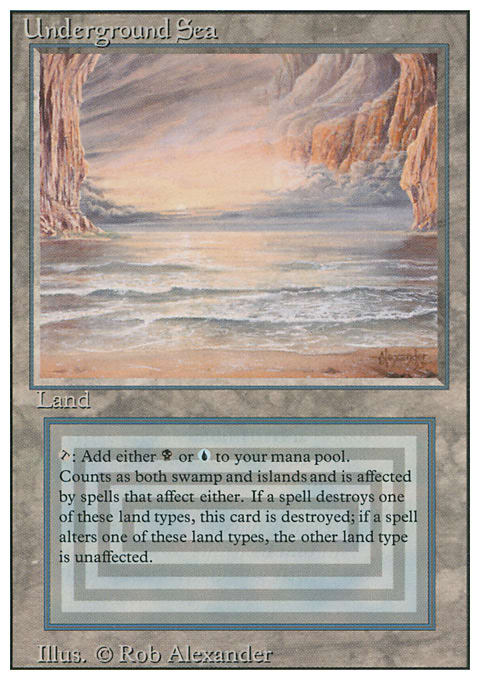Over the years, I have learned new tricks on how to stock your binder to look visually appealing toward whatever type of trader you are looking to find, but most of those tricks have been subtle changes such as separating cards by format. This week, I want to talk about a whole new bindering method that I feel will save you a great deal of headache and time at any major event. Over the past year, I have noticed that the number of traders at any particular event has grown drastically but that the quality of trades has gone down dramatically due to everyone trying to “binder grind.” Since this is now a much more common occurrence than before, I believe it is appropriate to shift with that trend and prepare your binders accordingly.
The first step to this process is to separate your cards into a number of piles—there are a three categories I would start off with before a card even hits a sleeve. The first of these categories is for cards you want to move. This will be your lead-off binder and should contain a good selection of cards and still no more than four of anything, but these should be cards you are actively trying to get rid of. Cards such as Boros Reckoner and Restoration Angel have very high values right now that are sure to drop over the next few weeks or months. Within this category, you also have cards that you perhaps have just been sitting on for way too long. Some foreign foil cards can be extremely slow moves, so putting them in your lead-off binder means they will be less likely to become lost in the mix.
This binder is probably the one I would spend the most time focusing on because in many trades, it may be the only one you ever have to pull out. Even if you come across a value trader, this binder gives you a bit of a buffer zone to figure out exactly what the other trader’s intentions are. If he seems to undervalue your cards, it’s a clear indicator that he is just there to grind, saving you the hassle of negotiating with cards your know will trade well otherwise. This also gives you some flexibility when trading with these types since you can give the value trader the value he so desperately fixates on while moving cards you know are dropping for slightly lower than current retail and picking up cards you believe are on the incline.
Given the present situation on the trade floors, I feel this new binder is almost a must if you are looking to go to any major event. You have the entirety of this first binder to decide what is the best avenue from this point, and you can almost always tell by the end of the first binder whether a trade is worth continuing. This binder also works well in general trading since most people will try to find something they need in each trade, and since you want to part with every card contained within, you can gain value just by turning these cards into format staples, even at a small theoretical retail hit.
The next binder I want to talk about is truly only useful if you know you have a lot of high-end cards that you don’t always want to show to people. For example, I have a binder that contains anything I am willing to trade that is $30 or more, which I reserve for only the traders who also have enough value to make the trade desirable. Sometimes, someone will mention he is looking for duals or something and wants to turn Standard cards into them, but I always let people know I do have them but that I ask a small premium when trading them down. This saves the time and arguments from ever having to occur when someone asks about your Underground Sea and all he has is what looks like a single box’s worth of cards; it also prevents the sharks from instantly targeting your high-end cards. I would say I pull this binder out in fewer than half of my trades and trade from it almost every time I do bring it out. Learning to judge someone from that first binder becomes very important so you can steer the trade in the desirable direction.
The third pile is very much a mixture of what’s left, and I divided this pile into a number of other piles for separate binders, but if you have a small collection, it may be best to put it all together. From here, I took the format staples that did not fit into either of the other categories and separated them into a Standard and non-Standard binder, allowing myself to actively know where a card would be if someone were seeking something in particular. Separating your formats also allows you to save time if you know the person you are trading with is strictly a Legacy or Standard player.
After pulling all the staples, I would take what would be considered just above bulk or Commander cards and put them in a binder for the more casual crowd. I like to avoid the above scenario—when someone has very little trade stock and is looking to gain a high-value card from you—and having a binder that is perhaps more within that person’s price range is a great way to do this. Most of the cards in this binder have very little monetary value, so if you can trade anything from here into staples or high-end cards, you are doing very well, and if you truly want to annoy an aggressive shark, this binder can fill that role as well.
Anything you have left after filling these binders can be thrown into a box and left in the bottom of your backpack. These are probably cards very few people are interested in, but that does not mean you should leave them at home; someone is always looking for obscure cards, and nothing feels better than having that Tenth Edition Seismic Assault when some guy wants to finish his matching play set. If you have a ton of extra cards and want to make duplicates of any of the binders, that is fine as well—it never hurts to have a diverse set of cards for someone to find something he is seeking.
The last thing I want to talk about in regards to creating binders is something I see so many traders do that I just can’t comprehend. If you have a card you feel is going up or that you are looking to hold onto, leave it in your bag or at home. Having cards in your binder means they are for trade. Granted, everyone deserves a page to express him- or herself, but if you feel Assemble the Legion is going up, don’t leave it in your binder just to give me a high price when I ask how much it is currently. Same thing goes for cards you just acquired and are not looking to trade. If something has to be in your binder but you don’t want to trade it, turn it backward or upside-down. This represents to me that you have a reason to hold onto that card and are merely keeping it there for safe keeping.
As always, it seems just when I get into a rhythm, it is time to wrap things up again. I hope everyone who is able to make it to a major event this weekend keeps these tips in mind. I have a wedding to attend this Friday, which prevents me from attending the Grand Prix, but that does not mean I won’t be keeping my finger on the financial pulse through coverage and insider tips. Join me again next week, as I should be able to hammer down a time to get my interview done and bring you all the results. As always, thanks again for reading, and please feel free to contact me through the comments section below or on Twitter.
Ryan Bushard

























